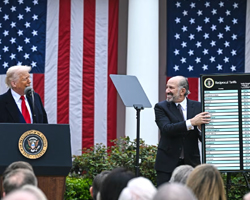Tech Rally Propels Dow Higher, Currencies Navigate Central Bank Signals, and Gold Seeks Stability Amidst Fed Speculations | Daily Market Analysis

Key events:
- Eurozone - ECB President Lagarde Speaks
- USA - Existing Home Sales (Dec)
- USA - Michigan Consumer Sentiment
- USA - FOMC Member Daly Speaks
On Thursday, the Dow managed to close higher despite a momentary stumble during the day, thanks to a resurgence in big tech, particularly fueled by a rally in Apple and chip stocks.
The Dow Jones Industrial Average experienced a gain of 201 points or 0.5%, with the S&P 500 also showing an uptick of 0.9%, and the NASDAQ Composite leading the way with a climb of 1.4%.

Apple Inc (NASDAQ: AAPL) took center stage, surging over 4% after Bank of America upgraded its rating on the stock from neutral to buy. The optimism stems from the anticipation that the demand for the latest hardware, supporting artificial intelligence features on iPhones, will drive users to upgrade from earlier models. Bank of America also highlighted the potential for continued growth in services, driven by advancements in categories like advertising and health and fitness, accompanying the upgrade of its price target on the stock to $225 from $200.
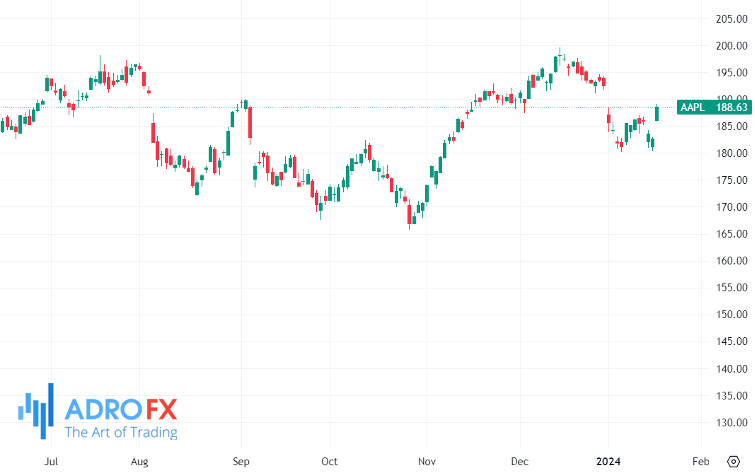
Additionally, the labor market exhibited ongoing strength as initial claims for state unemployment benefits dropped by 16,000 to a seasonally adjusted 187,000 for the week ending Jan. 13. This marked the lowest level since September 2022, signaling robust labor market conditions. However, this positive data, pointing to potential wage pressures and inflation, tempered expectations for a Federal Reserve rate cut in March.
Atlanta Fed President Raphael Bostic, in response to the unexpected progress in inflation and economic activity, indicated a revised timeline. He moved up his suggestion for when the Fed should commence rate cuts, advancing it to the third quarter of this year from the initially projected fourth quarter.
The Australian Dollar has sustained its upward trajectory for the second consecutive day on Friday. The currency gains positive momentum against the US Dollar driven by a strengthened domestic share market. This surge is fueled by a technology upswing on Wall Street following robust labor data from the United States. The improved sentiment in the economy has prompted investors to navigate uncertainties surrounding the interest rate trajectory set by the Federal Reserve.
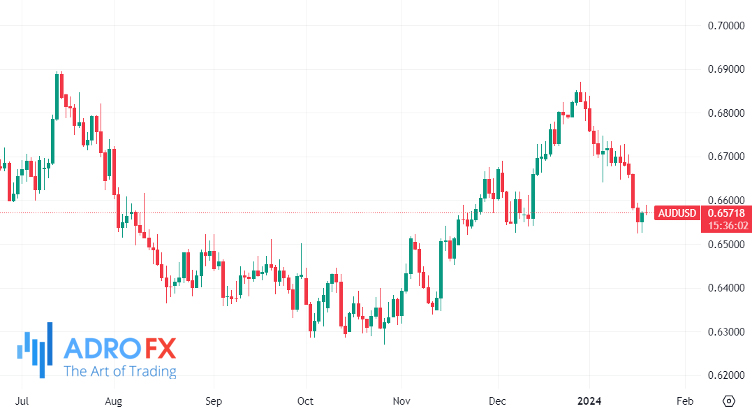
However, the Australian Dollar faces a hurdle due to speculation about potential early interest rate cuts by the Reserve Bank of Australia. This belief gained traction after an unexpected decline in Employment Change data released on Thursday for December. Additionally, a recent survey of 40 economists conducted by “The Australian Financial Review” suggests that respondents anticipate the RBA initiating interest rate cuts as early as September.
In contrast, the Japanese Yen remains defensive against the US Dollar during the Asian session on Friday. It is well within striking distance of its lowest level since November 28 touched earlier in the week.

The crucial Consumer Price Index in Japan indicated that inflation eased as expected in December, reinforcing market expectations that the Bank of Japan will maintain its ultra-dovish stance at the upcoming monetary policy meeting next week. Despite a stable performance in equity markets, the safe-haven JPY is undermined, allowing the USD/JPY pair to prolong its upward trajectory witnessed over the past three weeks.
The US Dollar continues its sideways consolidative price move near a more than one-month top. It draws support from hopes that the Federal Reserve might keep interest rates higher for longer. This upward pressure on US Treasury bond yields acts as a tailwind for the USD/JPY pair, reinforcing the positive outlook.
In the cryptocurrency space, Bitcoin has experienced a notable decline over the last week but continues to trade above $42,000, a level it has tested repeatedly in recent days. Optimism has cooled slightly since the ETF approvals, with traders anticipating the next catalyst for a potential rally higher. The upcoming halving in April is a significant event on the horizon, though its impact on prices is uncertain. In the short term, broader market conditions may play a more significant role in shaping Bitcoin's price movements.
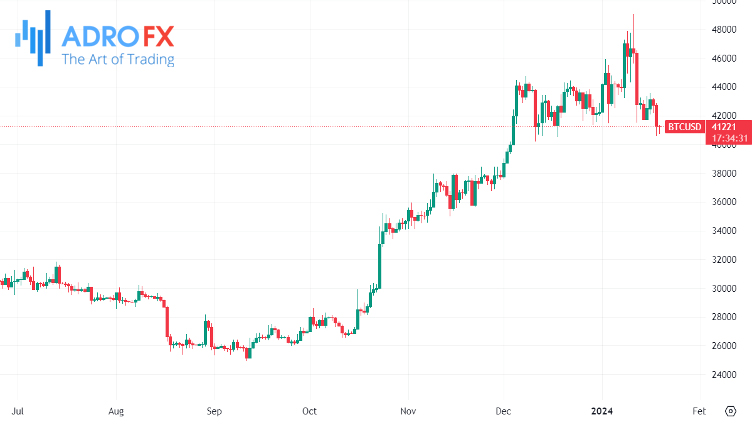
Gold prices stabilized on Friday, attempting to recover from significant declines throughout the week, as uncertainties surrounding early interest rate cuts by the Federal Reserve negatively impacted the precious metal.
Earlier in the week, bullion prices experienced a sharp drop to a one-month low, but managed to find some support around the $2,000 per ounce level, driven by a degree of safe-haven demand.
The decline in gold was primarily attributed to traders shifting towards the dollar. Strong economic data and hawkish-leaning comments from Fed officials contributed to the market scaling back expectations for a rate cut in March, putting pressure on the yellow metal.
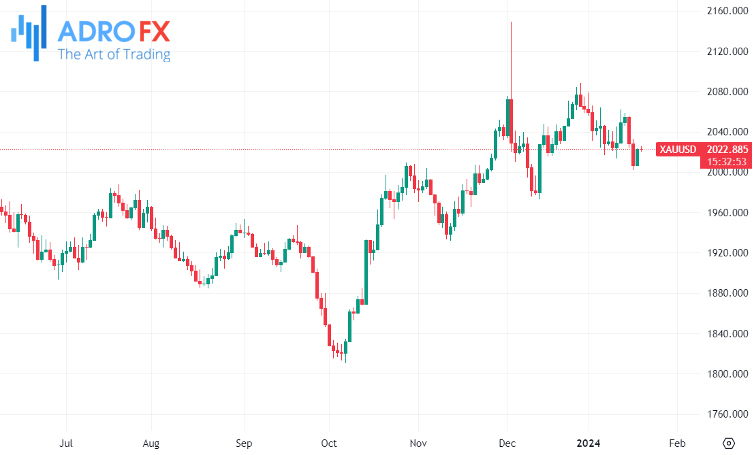
Despite the challenges, gold still garnered support from safe-haven demand, particularly as a military conflict in the Middle East intensified. Ongoing clashes between US and UK forces with the Iran-led Houthi group in the Red Sea, coupled with escalating tensions between Iran and Pakistan following a series of strikes, contributed to this demand.
The main pressure source on gold was the diminishing expectations of an imminent rate cut by the Fed, now projected to occur no sooner than March 2024. This trend indicates persistent challenges for gold due to prolonged higher interest rates, increasing the opportunity cost of investing in bullion.

